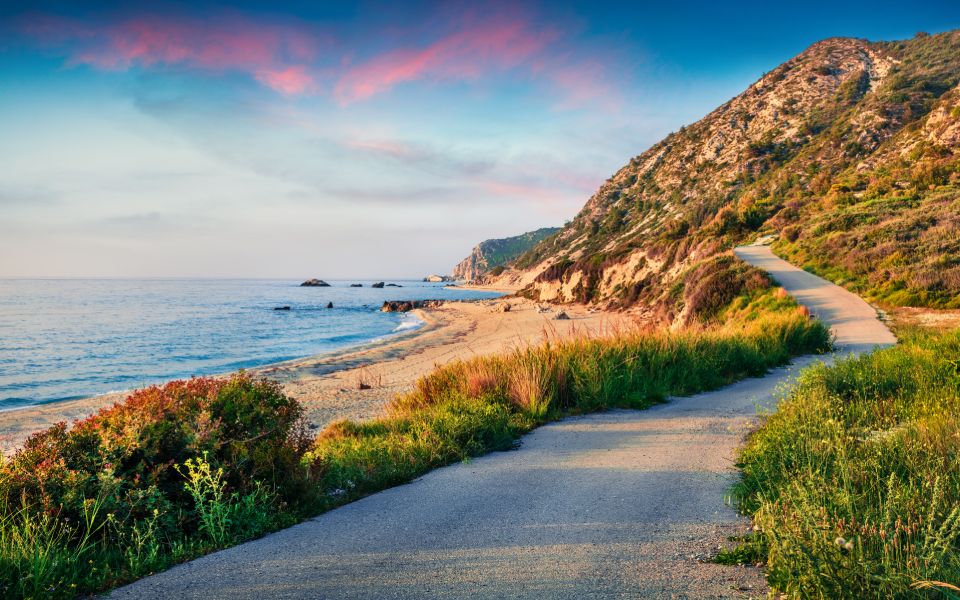1. Ancient Olympia
Location: The Peloponnese, 290 km/3.5 hours from Athens.
Overview: The original home of the Olympic Games, this place needs no introduction. The most important sacred monument in Ancient Greece, dedicated to Zeus, was built here. The archaeological site (and its many wonders: the Philippeion, Nero’s house, the Stadium) and the museums, such as the Archeological Museum (where you can find the Hermes of Praxiteles statue), are situated very close to the new settlement, a small folkloric and touristy village.
Where to swim: Kaiafa beach (23 km), or another beach of the immense Gulf of Kyparissia, where Caretta caretta loggerhead turtles nest and hatch – so keep an eye out!
Great for: Archaeology students and devotees of the 12 Gods with a soft spot for Zeus.
Not so great for: No one. Olympia is the epitome of universality; it appeals to everyone and holds a place for all.
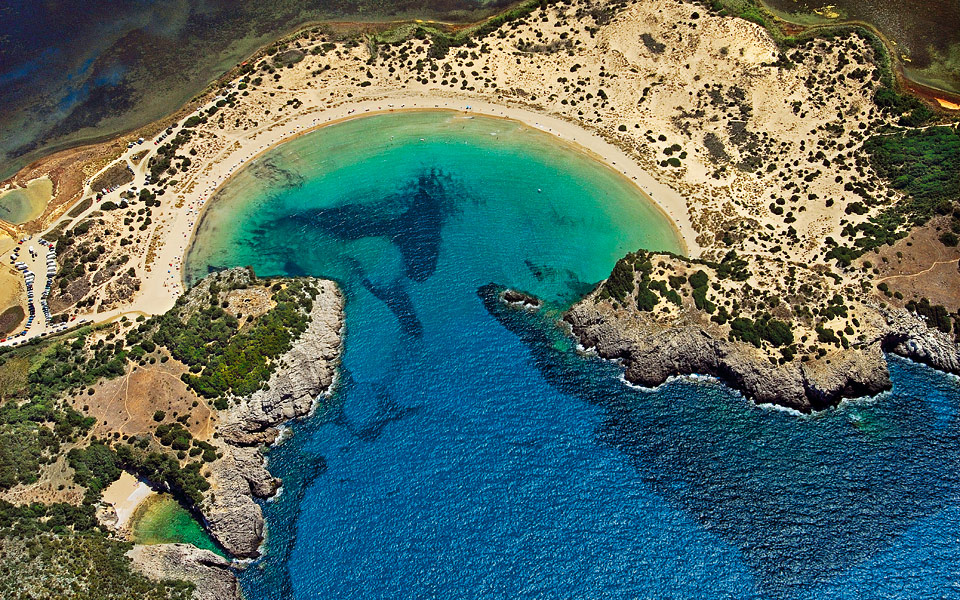
© Mythical Peloponnese
2. Pylos
Location: The Peloponnese, 274 km/3 to 3.5 hours from Athens.
Overview: The Venetian name for Pylos is Navarino; it is a sweet, pleasant coastal town where everything flows effortlessly. That is the town’s greatest quality – the fact that the atmosphere is so relaxed that you forget about all your worries and troubles simply by sipping a coffee at the central Three Admirals Square.
Where to swim: Voidokilia beach (17 km), one of the top beaches not only in the Peloponnese but in all of Greece. Its spherical shape makes it look like a giant summer embrace.
Great for: Whoever longs for tours with a Game of Thrones atmosphere – Greek style. It’s not just the Niokastro (a 1572 Ottoman fortress) on the southern entrance of the port that makes Pylos a destination for castle junkies, but also the Methoni (11 km) and Koroni castles located a bit further (41 km) away.
Not so great for: Fans of contemporary architecture and experimentation. In Pylos, things remain traditional and the prevailing architectural norm is tall houses with brick roofs. Anything deviating from this pattern is simply rejected by the city planners.
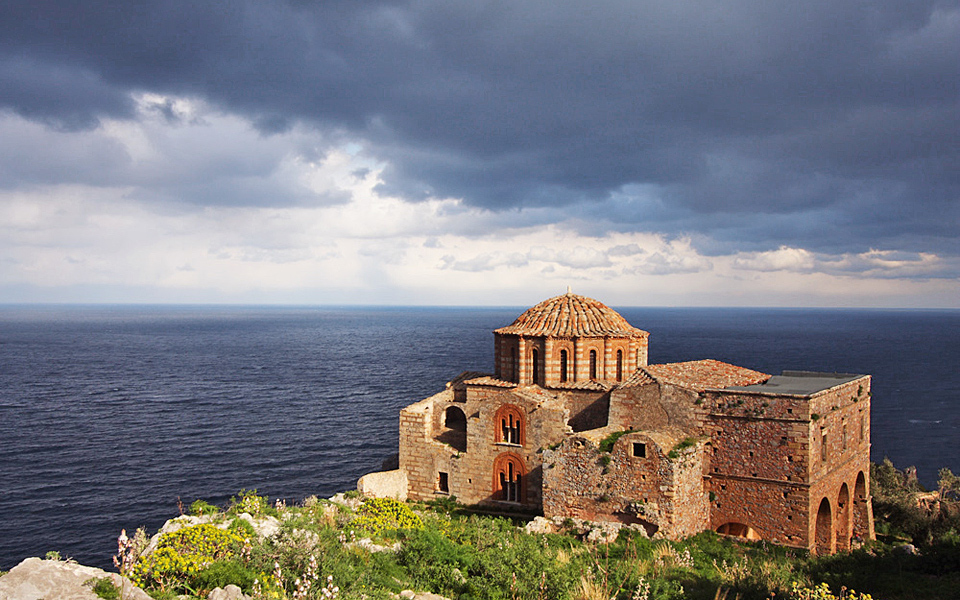
© Olga Charami
3. Monemvasia
Location: The Peloponnese, 300 km/3.5 to 4 hours from Athens.
Overview: Monemvasia is a medieval citadel as well as a gateway to the past: The city’s urban plan still follows that of Byzantine times (split in upper and lower towns), with traditional three-story stone houses with arches and cisterns. Unlike other historical cities – such as Mystras – it has not turned into a “museum”. On the contrary, it is still very lively.
Where to swim: Portelo, in the citadel, is an opening towards the sea leading to a rocky shore. There are other beaches a few kilometers outside of Monemvasia, like Pori and Xifias.
Great for: Lovers of monuments that have lived 100 different lives over time, like the church of Aghia Sofia in the upper town; it is a 12th-century temple originally devoted to the Panaghia Odigitria (Our Lady of the Way), which was converted into a mosque during the first period of Ottoman rule; during the second period of Venetian rule, it became a Catholic monastery and in the second round of Ottoman rule, it reverted to a mosque. It was returned to its original state – an Orthodox monastery – after the liberation of Monemvasia from the Ottomans in 1821. Today, it is considered one of the city’s greatest monuments.
Not so great for: Those who cannot stand the heat (Monemvasia is boiling in the summer) and people with mobility problems – wheelchair users will find it difficult to maneuver the the Kastro. Especially this year, tourists visiting Monemvasia must be careful not to congregate in the narrow alleys.
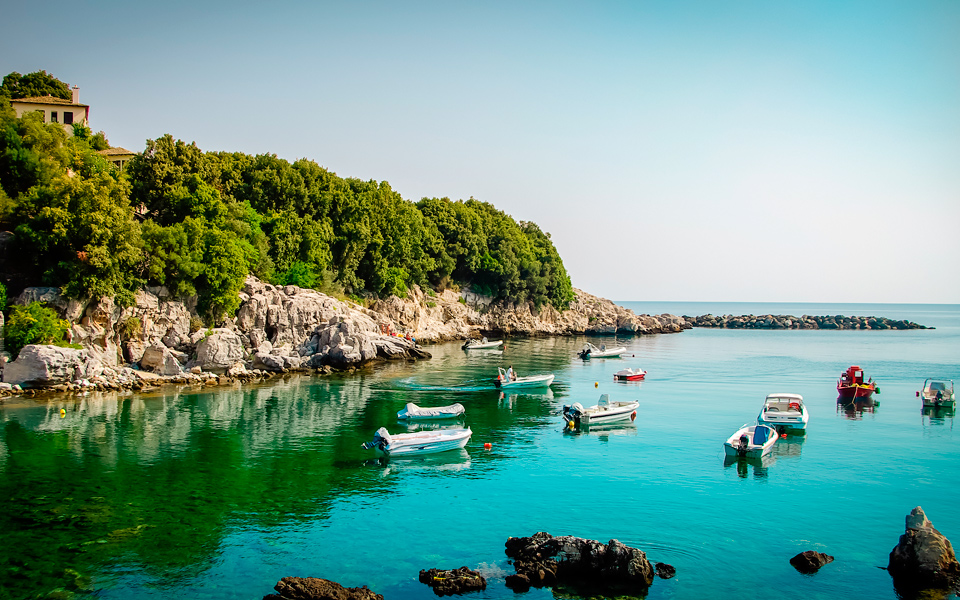
© Shutterstock
4. Pilio
Location: Thessaly, 363 km/4.5 hours from Athens.
Overview: The Mountain of the Centaurs and summer residence of the Olympian Gods comprises dense vegetation of wild chestnuts, oaks and plane trees. It is one of Greece’s top travel destinations, and not just because it combines mountain and sea, but also because it is full of beautiful stone-built villages; their allure and architecture are proof of the wealth that has passed through here.
Where to swim: Any one of the amazing Pilio beaches, such as Mylopotamos, Papa Nero, Fakistra and Damouchari.
Great for: Admirers of forbidden loves in Greek mythology, like that of Ixion, king of the Lapiths (creatures that were similar to centaurs), for Hera. Hera’s husband Zeus found out about it and to punish Ixion he gave the shape of Hera to a cloud (Nephele); Thinking Nephele was Hera, Ixion had a child with her, Centaurus. Centaurus then got together with the mares of Magnesia and they gave birth to the centaurs, creatures that had human heads and arms, and horse legs.
Not so great for: Drivers who are used to wide, comfortable, straight roads. The road network in Pilio is the exact opposite.
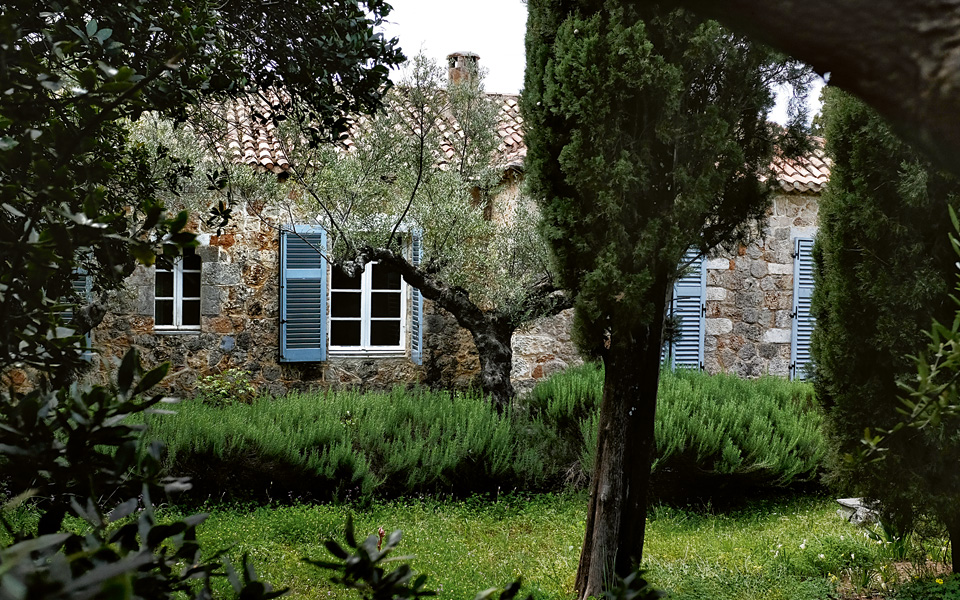
© Nikos Kokkas
5. Kardamyli
Location: The Peloponnese, 273 km/3.5 hours from Athens.
Overview: Built over the sea, Kardamyli is a top destination in the Peloponnese; it is undoubtedly beautiful, with stone mansions and restored towers. It is the pride of Messinian Mani and combines the introversion of Messinian architecture with a soft, mild Mediterranean landscape.
Where to swim: At the pebbled Ritsia beach, in the green waters at Foneas, at the busy beach of Stoupa or at the erudite beach of Kalogria, where internationally renowned Greek author Nikos Kazantzakis (1883-1957) lived for a while with his literary hero Alexis (whose name in real life was Giorgis) Zorbas (1865-1941).
Great for: Book lovers: Aside from Kazantzakis, the region was also home to British author Patrick Leigh Fermor (1915-2011). His magnificent house in Kalamitsi was recently renovated and is ready for visits.
Not so great for: Whoever is on a tight budget. Kardamyli is exceptionally beautiful and it charges you for it.
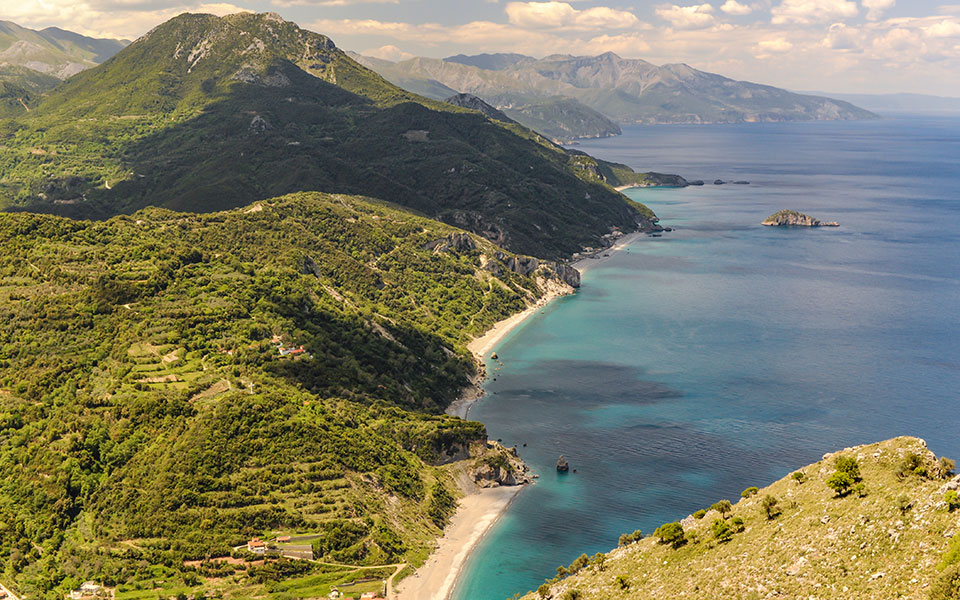
© Shutterstock
6. Evia
Location: Central Greece. Its capital, Halkida, is located 80 km/1 hour away from Athens.
Overview: Evia is Greece’s second largest island after Crete, but because of its proximity with Athens and the fact that it is accessible by car, most people consider it a piece of the Greek mainland. Indeed, Evia does not possess an island atmosphere nor a unique identity; on the contrary, it seems to be made of a variety of microcosms. Its biggest flaw is its road network, which requires visitors to be cautious and very patient.
Where to swim: To begin with, visit the beaches of Hiliadou, Aghia Anna and Rovies. Then, you can pick out the one that suits you best from the dozens of beaches on the island.
Great for: Those who love change. Evia has got plenty of everything. Beaches: Check. Gorges: check. Atmospheric villages: Check. Thermal springs: Check. Mysterious “dragon houses”, whose use has still not been determined between temples, fortresses or refuges: Check.
Not so great for: Those who confuse left with right and who go North instead of South (or the other way around). The northern part is more touristy and the southern part keeps a lower profile, so if you end up on the side opposite to the one you had originally set for, your vacation will be quite different to the one you had planned.
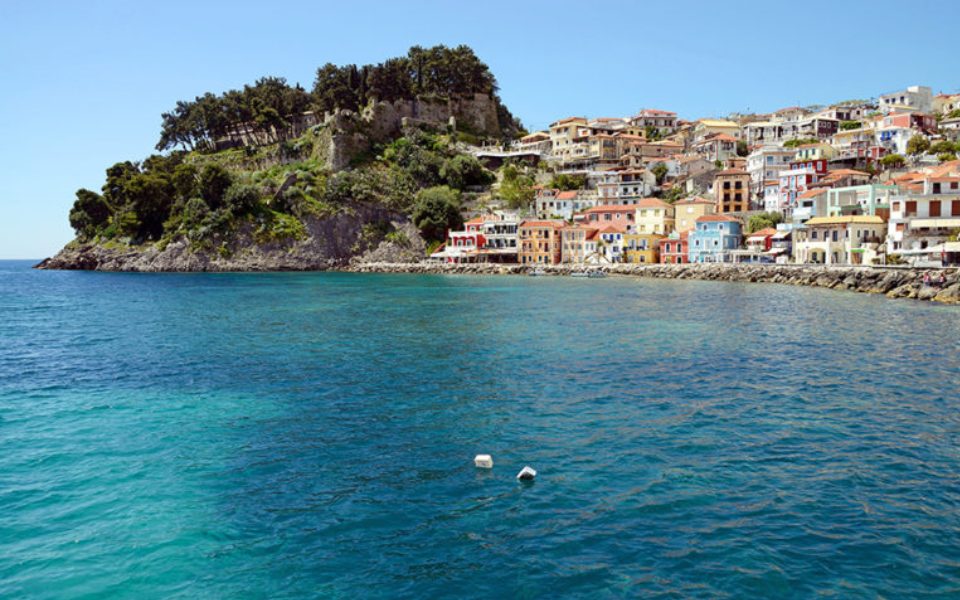
© Shutterstock
7. Parga
Location: Epirus, 432 km/4.5-5 hours from Athens.
Overview: Parga’s nickname is “Ionian queen,” and it suits it like a glove. It is a beauty built in a half-circle facing Paxi. This Greek mainland town resembles an island – it is the opposite of Evia. Parga’s colorful two or three-story buildings and narrow streets give it a refreshing atmosphere, which hardly leaves anyone unmoved.
Where to swim: Valtos, Ai-Giannakis, Piso Krioneri and Lichnos beaches. If you are in the mood for a small road trip, drive until the village of Syvota (28 km/40 minutes) and its beaches with deep blue waters extending in front of verdant landscapes; you won’t regret it.
Great for: Those who want to walk to the gates of the Underworld. The Necromanteion of Acheron is located just 20 km away from Parga.
Not so great for: Those who dislike graphic landscapes. Parga is the definition of picturesque.
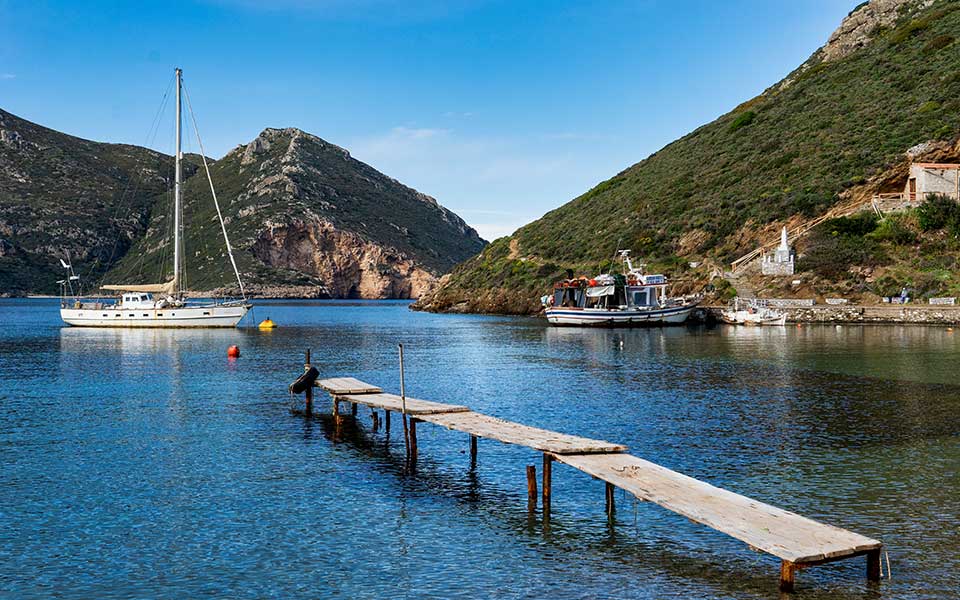
© Perikles Merakos
8. Lakoniki Mani
Location: The Peloponnese, 271 km/3.5 hours from Athens.
Overview: Lakoniki Mani, comprising the central and northern parts of the Mani Peninsula, is our very own Wild West. It is a barren and evocative place with towers and stone-built villages that gave birth to a closed society which is bound by tradition and possesses deep-rooted customs. The beauty of Lakoniki Mani is undeniable, and the best way to get acquainted with it is to drive from end to end and discover all its – inhabited or abandoned – villages.
Where to swim: Limeni, Almyros and Porto Kagio beaches, and many more. With a little appetite for exploration, you will discover the great diving spots that the area has to offer.
Great for: Those who grew up reading Lucky Luke comics, or stories from ancient Sparta – which possesses a similar mentality to that of the Maniots today.
Not so great for: Those who burn easily in the sun. If you go to Mani, get ready to roast.
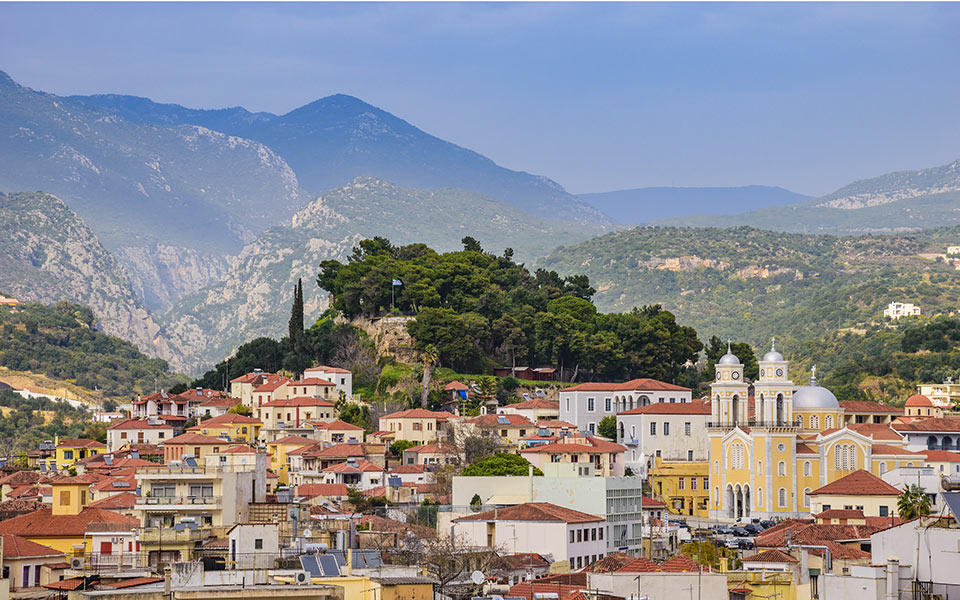
© Shutterstock
9. Kalamata
Location: The Peloponnese, 239 km/2.5 hours from Athens.
Overview: Words are unnecessary for the Messinian capital, which has become one of the most popular cities in Greece both for Greeks and visitors. Surely, the good road network (the safe and fast Moreas Motorway, or A7) that links Athens with Kalamata is a good incentive for picking that destination, but that’s not the only reason; the city’s allure alone wins you over. You can explore all of it by bike or on foot, and its hangouts are each time more inviting (for coffee, food, wine or cocktails); this makes Kalamata an ideal place for an excursion.
Where to swim: First of all, at Kalamata beach, which is a clean beach within the city. Then, all the other beaches of the Messinian Gulf – you will not run out of options.
Great for: Dancers, choreographers, dance teachers and dance therapists. The renowned Kalamata International Dance Festival has turned the city into a dance mecca.
Not so great for: Kalamata is the girl next door. It is a place tailored to the needs of the average tourist. Which means that it was made for everyone, except those seeking eccentricity.
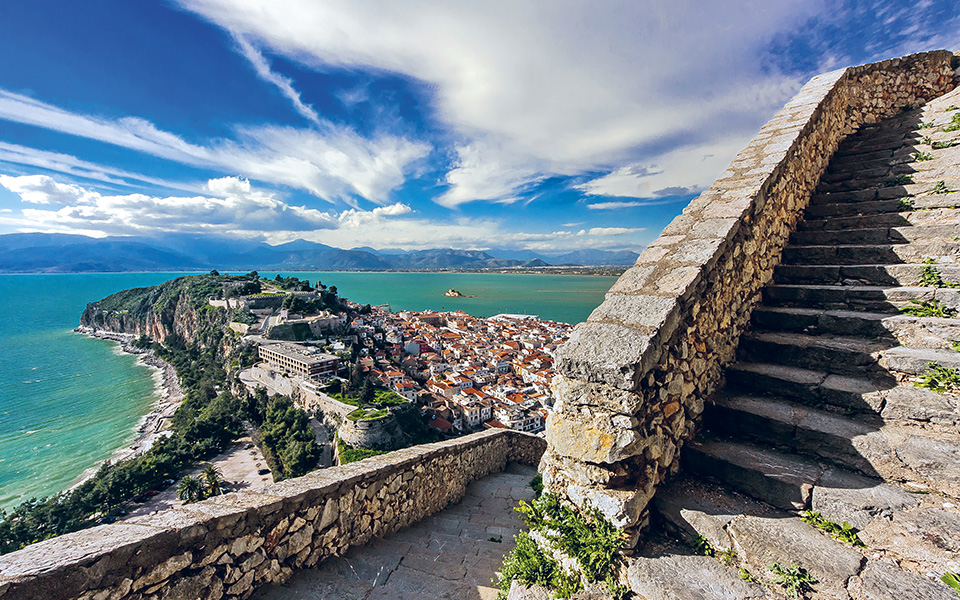
© Shutterstock
10. Nafplio
Location: The Peloponnese, 137 km/1.5-2 hours from Athens.
Overview: There are three main reasons to visit Nafplio. First, it is a historic place, as it was the capital of Greece from 1828 to 1834. Second, it is an incredibly beautiful traditional settlement that looks more like a theatrical set than a Greek city. Third, it is lively, filled with cafés, restaurants, bars, but also active cultural organizations that host events, thus protecting the city from becoming a giant gastronomic Disneyland aimed at tourists only.
Where to swim: Karathona beach (5 km). Beware of sea anemones.
Great for: Those who love stories with suspense and political intrigue. Nafplio was the setting for one of the greatest of the genre: it is where Ioannis Kapodistrias (1776-1831), first governor of Greece, was assassinated by his opponents in the Mavromichalis family.
Not so great for: Descendants of the Mavromichalis family.
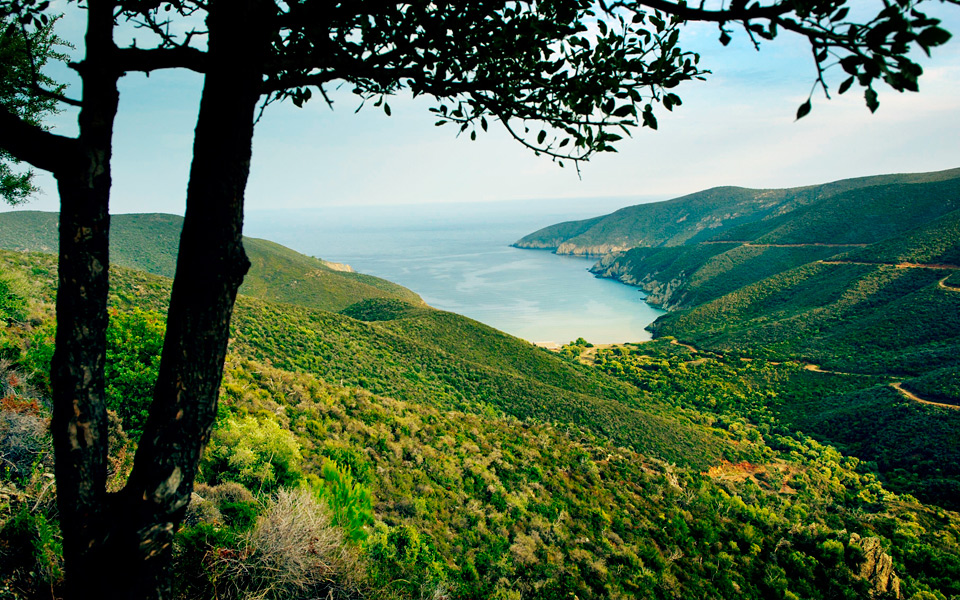
© Giorgos Toulas
11. Halkidiki
Location: Central Macedonia, 570 km/6-6.5 hours from Athens.
Overview: Halkidiki is the queen of Greek summer. It is a peninsula that resembles a hand with three fingers, which in Greek are referred to as “legs.” The first two legs, Kassandra and Sithonia, are open to visitors and quite touristy. The third leg, Mt Athos, hosts the autonomous monastic community of Aghion Oros, where access is permitted to men only.
Where to swim: At one of the dozens of beaches to which Halkidiki owes its reputation as a top travel destination. The most famous one is Kavourotrypes.
Great for: Those who love spending summer in mobile homes, at organized campsites and getting close to nature – Sithonia will feel like heaven to them. Also, those who want to drink cocktails at beach bars, spend their nights at clubs and generally put entertainment at center stage during their holiday – the ideal place for them is Kassandra.
Not so great for: Feminists. They might not enjoy the idea of women not having access to an area of 336 square km, which, on top of everything, is a UNESCO World Heritage Site.

© George Tsafos
12. Messolongi
Location: Central Greece, 241 km/2.5-3 hours from Athens..
Overview: A city built on a complex of lagoons is not quite usual in the Greek landscape. And yet it exists. Messolongi is located next to a unique habitat of birds and fish. Its sunset competes with that of Santorini. As for its daily activities for travelers, they center around trips to “ivaria” (traditional fish farms) to see how the “bafa,” the female mullet, is caught. Bottarga, the most gourmet local meze, is made from this fish.
Where to swim: At Lourou beach, a giant sandy beach located 36 km away from Messolongi.
Great for: Eco-tourists who dream of spending their holidays in an observatory, binoculars in hand, observing ducks, cormorants, herons and gulls.
Not so great for: Very romantic eco-tourists who dream of the above but are not ready to face a somewhat different reality. Aside from cormorants and guls, the lagoon attracts illegal fishermen and hunters who disturb the ecosystem’s balance.
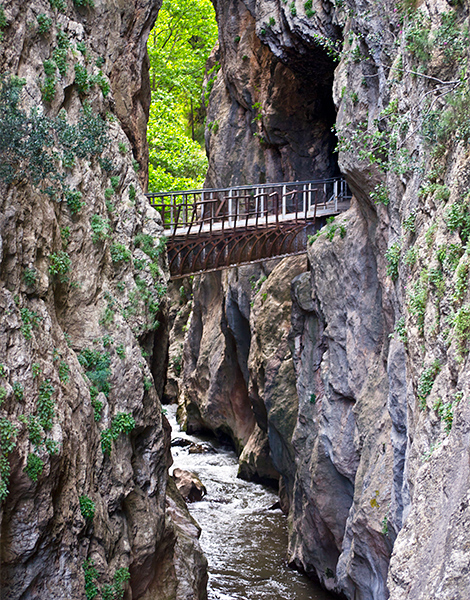
© Clairy Moustafellou
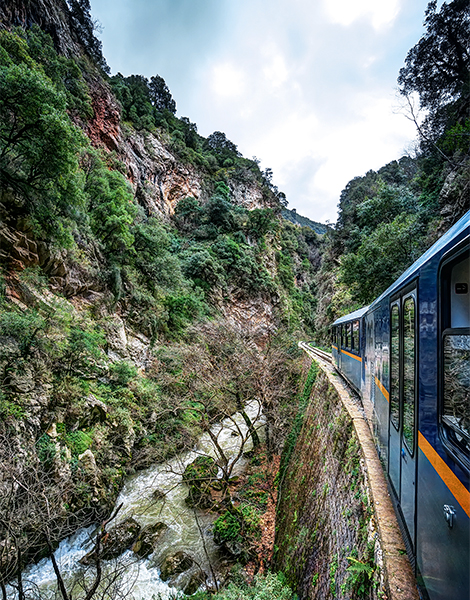
© Shutterstock
13. Diakopto
Location: The Peloponnese, 161 km/1.5-2 hours from Athens.
Overview: Diakopto, a town built on the coast of the Corinthian Gulf, is a godsend for the Athenians. Like many other settlements located on the northern Peloponnesian coastline, between Athens and Patras, Diakopto welcomes the summer dreams of the capital’s residents. Aside from its proximity with Athens, one of Diakopto’s plus sides is the fact that it is surrounded by genuinely nice locations that are ideal for activities for nature lovers.
Where to swim: At Diakopto beach – why run around when what you need is right in front of you?
Great for: Families with children that go crazy for old trains. There is a rack railway connecting Diakopto with Kalavryta that passes through Vouraikos Gorge.
Not so great for: Moonstruck romantics. Diakopto is made for down-to-earth travelers who look for comfort, play and contact with nature. Poetic landscapes like those of the Cyclades, that stimulate imagination, will not be found here.
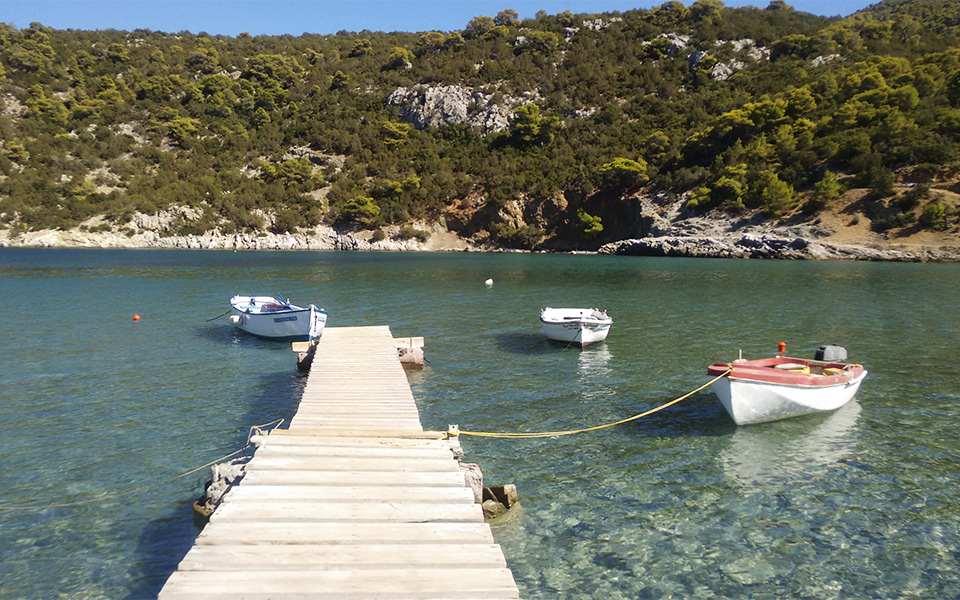
© Anthony Grant
14. Poros
Location: The Argo-Saronic Gulf. Drive to Galata (162 km/2-2.5 hours from Athens) and hop on a ferry that will take you there in five minutes.
Overview: Poros is one of the diamonds of the Argo-Saronic Gulf. It has a noble character, carries a sweet, worn-out charm from the past, but does not possess Hydra and Spetses’ arrogance. In other words, it is the most grounded aristocratic island in the Saronic Gulf and, by implication, the less expensive one. Its neighborhoods were built in a neoclassical style and its countryside is covered in pine trees. It is a small island that you can easily get around.
Where to swim: The Russian Naval Station beach and Vagionia bay.
Great for: Those who hate travel planning and want to be able to just get in their car whenever they feel like it and drive here without any real preparation.
Not so great for: Nouveau riches. Poros is an old urban island, with a solid cultural identity. Just like that old uncle we all have who is an intellectual and is a little behind in terms of trends. It is nevertheless a place of quality and is not made for casual tourism.
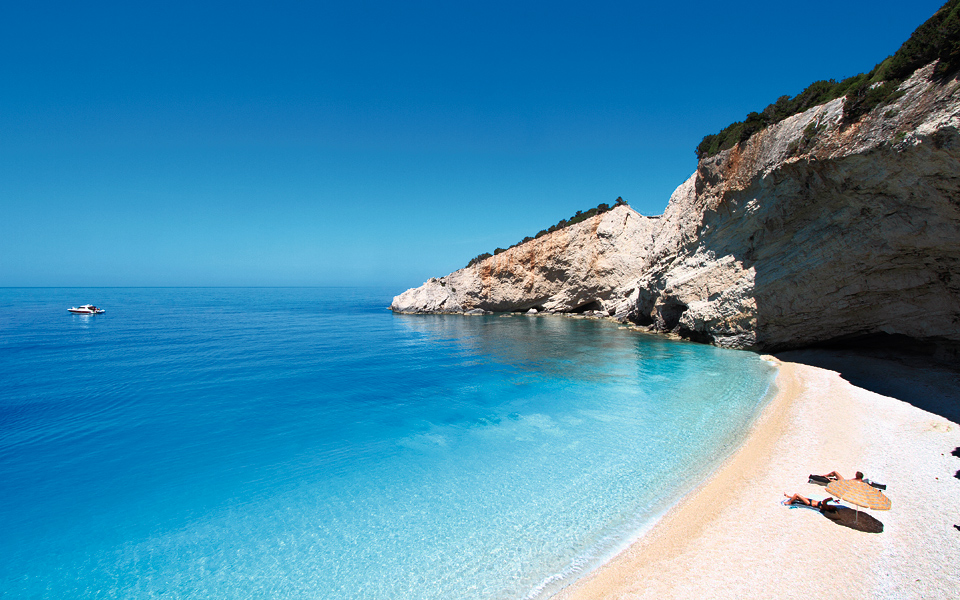
© Shutterstock
15. Lefkada
Where is it: An Ionian island, it is connected to mainland Greece by a floating bridge. It is located 360 km/4-4.5 hours from Athens.
Overview: Lefkada belongs to the “exotic” Greek island group. Even Greek themselves are amazed by it; being used to more simple landscapes, they get ecstatic at the sight of its white sands and light blue waters. Lefkada is touristy, extroverted and mainstream. It is also suitable for groups of young people who want to spend all day on the beach, and for those who love sports – such as windsurfing, kite surfing and paragliding.
Great for: Those who have a soft spot for the color blue will be able to enjoy all its shades in Lefkada.
Not so great for: Those looking for a quiet holiday where they can reflect. Lefkada does have places like this, but generally, the island is suited for lighter moods.

